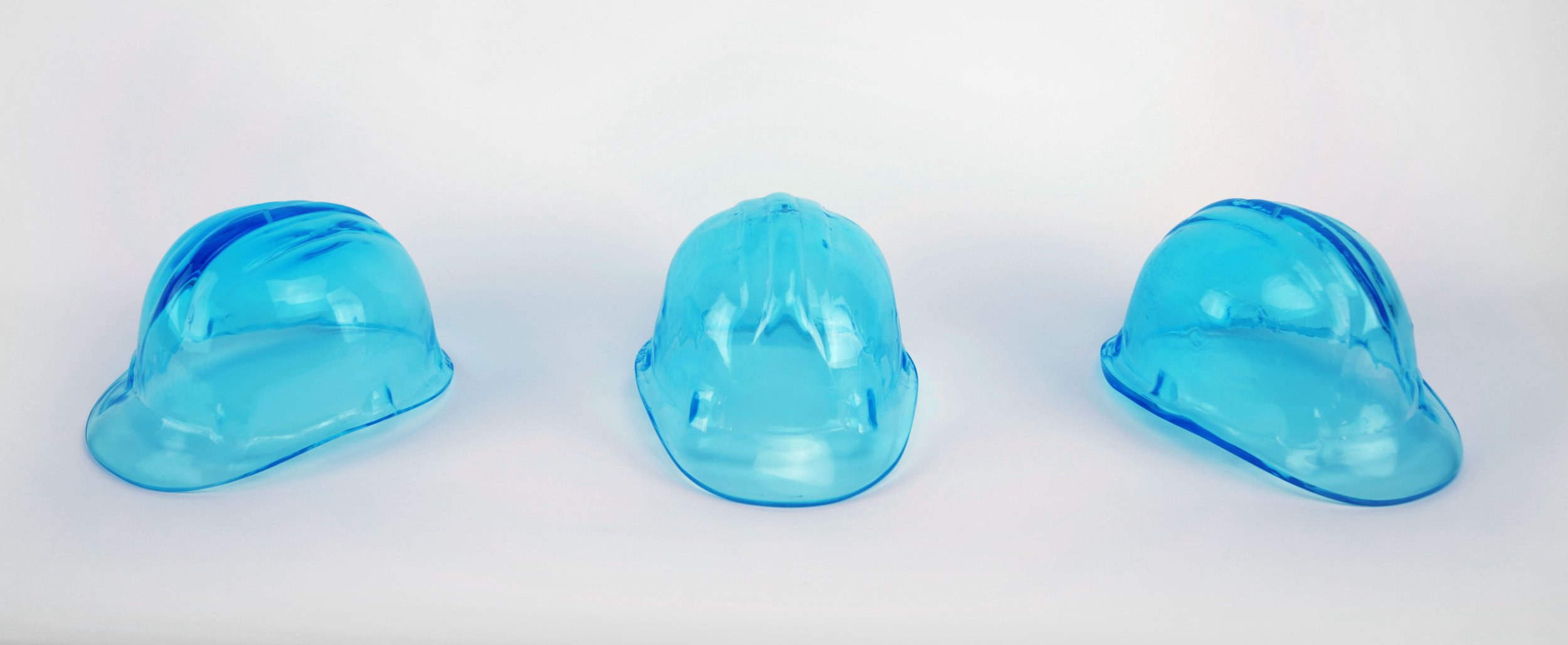“Silk Road Works” is a symbolic construction site for a pluralist society. The project deploys architectural storytelling to offer a border reflection on issues of migration, labor, and identity politics along the Silk Road in history and today. Three responses to the Biennale theme “How will we live together?” are assembled through three Silk-Road themed architectural wearables: construction workers’ safety vests made of silks from various regions of the Silk Road, coveralls made of Venetian Rubelli fabric, and hard hats made by Murano glass masters of blue glass.
The first perspective points to Venice’s historical position as the Western hub of the Silk Road, and its role as a cultural and commercial hub of Europe’s exchange with the East. The external tessellation of the safety vests is inspired by facade elements of Palazzo Ducale in Venice, as well as Mamluk and Seljuk architecture. The lozenge pattern of the Doge’s Palace’s facade represented a celebration of Venice’s new social class’ victory over Vatican’s influence on regional trade at the time (and the prohibition of trade with the Islamic institutions). The palatial colonnades are translated into construction workers’ coveralls featuring Venetian Gothic arches. These “armpit arches” only become visible, once individuals connect their hands. Through these references from architectural history, the project foregrounds the possibility of transcultural exchange, despite political divisions.
The second perspective highlights contemporary concerns of the Silk Road, such as the Belt and Road Initiative, a gigantic infrastructural development encompassing 70 countries that was launched by Chinese government in 2013, as well as various issues of labor migration and exploitation in the building industry. These themes are reflected in the silks selected for the installation: the forced labor of Uyghur people in China, the forced labor of cotton pickers in Uzbekistan, the labor exploitation in the construction industry in the Gulf region, and the drowning refugees seeking labor in the Mediterranean region. These issues are also represented in the assembly of interconnected vests that could be read as life vests. The mannequins holding hands represent workers united, pointing to a new social class of disenfranchised, exploited individuals, who are stripped of their heritage and exploited in the new (building) economy of the Silk Road.
The third perspective brings the historical and contemporary dimensions together to visually advocate for a future peaceful coexistence. The figures could be seen as people commanded to put their hands up for arrest, but they also look like people who are about to pray together. The vest’s interior silk lining alludes to the prayer carpet-like facade elements of the famous Venetian palazzo Ca’ d’Oro. Unfolded flat, these vests constitute a wearable, portable mosque, allowing for a transformation of any space from a secular to a religious context and vice versa. This programmatic and typological elasticity of the mosque is deployed as a visual tool to deconstruct an essentialist idea of a homogenous, static identity, and to embody the leitmotif of cultural mobility.
Finally, the heads of the mannequins carrying hard hats made of glass, contemplate the question of who should be in charge of protecting our peaceful coexistence in the future? We might draw inspiration from shared histories and gain strength through prayers, as we look at outlines of the Lamassu, the Buraq, the Garuda, the Pixiu, and the Venetian winged Lion laser-cut leather harnesses of the construction helmets–these five hybrid mythical creatures connect humanity’s shared yearning for protection and power across religions, cultures, and geographies. The blue glass helmets draw attention to the pressing social, political, humanitarian, and environmental crises along the Silk Roads of today. The brittleness of the glass material points to the fragility of our global institutions in charge of protecting the world’s natural and cultural heritage, as well as human and non-human rights.
Produced for the 17th International Architecture Exhibition, la Biennale di Venezia 2021. Featured at the “Among Diverse Beings” section of Venice Architecture Biennale 2021, Arsenale
Exhibition curator: Hashim Sarkis
Concept, design and prototyping: Azra Akšamija
Production team: Lillian Kology (vests and coveralls), Sophia Giordano (vests/assistance), Stratton Coffman and Natalie Bellefleur (planning), Kailin Jones (helmet harnesses), and Berengo Studio / Adriano Berengo and Sandrine Welte (glass helmets)
Exhibition photos: Azra Akšamija and Lillian Kology ©Azra Akšamija, 2021.
Material sponsoring: Rubelli Venezia
Produced with the generous support of the Austrian Federal Chancellery and the Styrian State Government
Press:
Installation
Commissioned for the 17th International Architecture Exhibition, la Biennale di Venezia 2021
Medium and dimensions: Vests (33), silk fabrics from various regions of the Silk Road, reflective fabric, reflective and golden piping, clasps and zippers, 130 x 65 cm each; Coveralls (5), Barbarigo silk by Rubelli Venezia, created as a reproduction of a wall typical of the Venetian Baroque (i.e. in Palazzo Ducale), 60 x 175 cm each; Helmets (5), Murano glass, with helmet harnesses laser-cut in leather, 15 x 22 x 28 cm each.
































